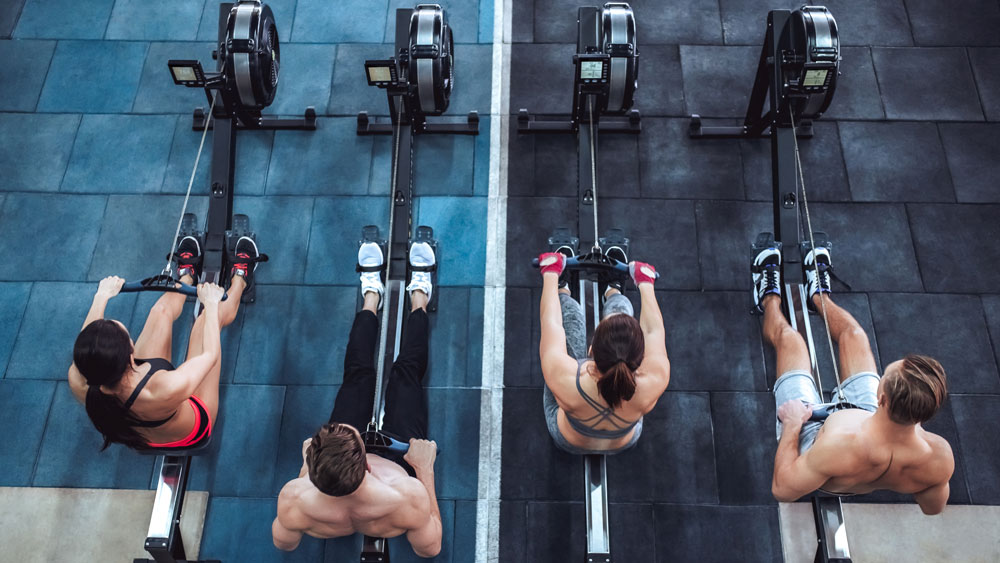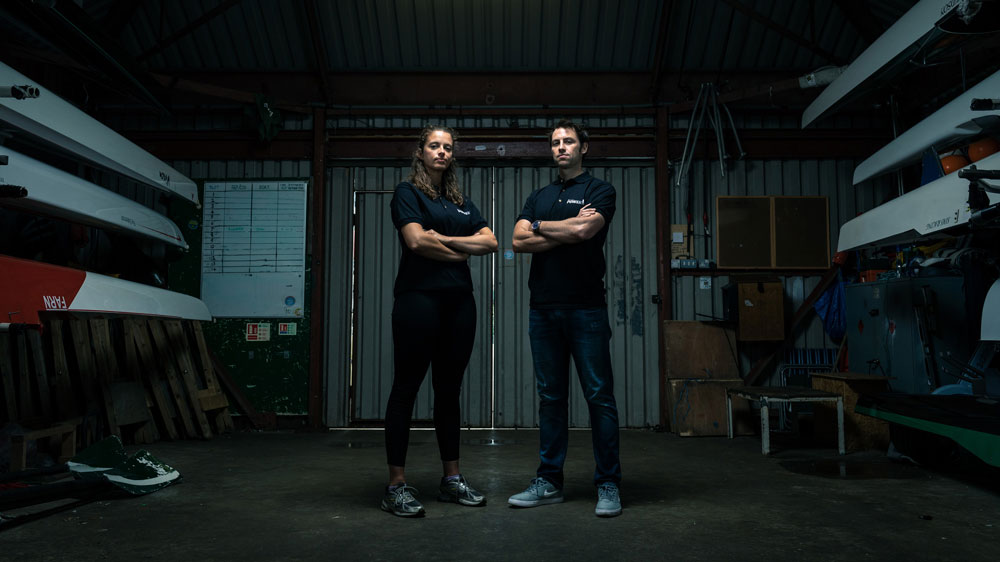A New Rowing Gym Challenge For A New Rowing Competition
Log your best 350m time before the first Power8 Sprints meet in July

Two thousand metres is the classic rowing distance, both in the gym and on the water, but British Rowing is launching a new race this year called Power8 Sprints. It’s an all-out dash for the line over 350m that’s the closest we’re likely to come to aquatic human-powered drag racing.
The first meet is on 22nd July in Bristol, where eight teams representing English cities will go head-to-head in a knockout tournament. It should be well worth showing up for the atmosphere alone. Coach had the chance to hear from Olympic gold medallist Mark Hunter, who’s very much on board with the new format. “When you watch normal racing, it disappears out of sight,” Hunter explains, “but having something short and sweet where people can be on either side of the banks, close to the action, you can create that noise and sense of excitement.”
So what will it be like to row this distance? “It’s exciting, it’s pure adrenaline,” says Carly Morris of Manchester’s crew. “The length of this race is what you normally need to get a boat to speed in a head race or a regatta. You do the first 500m at a high rate to get as much power down as possible, then sit there and hold it for the rest of the race until you pick it up again in the last 500m. This is just an explosive 30 strokes, flat out.”
“One mistake and it’s over,” adds Hunter. “The race takes less than a minute, so you have no chance to put it right.”
Before the big day, British Rowing is holding the Power8 Sprints Gym Challenge, a chance to log your (or your team’s) best time on a rowing machine over 350m and maybe win some British Rowing Mizuno kit or a trip to the first event. Just give the distance a crack, or tackle it as a team of two men and two women who all row 350m each, one after the other, and upload the time to the Power8 Sprints Gym Challenge page.
In case you’d like to increase your chance of topping the leaderboard by training to improve your time, we asked Hunter and Morris for their tips.
How To Nail 350m On The Rower
Some basic pointers to start. “I always see people smacking the resistance up to level ten,” says Hunter. “If the machine is in good nick then we’d normally be on somewhere between three and five. As this is an explosive thing, you might put it up a bit higher.”
Get the Coach Newsletter
Sign up for workout ideas, training advice, reviews of the latest gear and more.
Getting your foot position right is crucial. “You often see people not adjusting the feet to the right height for their body to ensure they can slide properly,” says Hunter. Make sure the straps are over the balls of your feet and, at the starting position, your shins are vertical.
Here’s some good news: you won’t have to spend hours refining your technique. “Because it’s a sprint distance on a static machine, you’re just trying to get as much power and wattage down as possible,” says Hunter. “Just make sure you have the basic technique right – you’re not smacking your knees with the handle and you can actually use your legs, your back and your glutes at the right time. A lot of people open up their backs when they go flat out so they fall off the seat. That’s why sequence is so important – driving in the right manner and right phase.”
“Connect through your core,” advises Morris. “Your core is the most important part of the sequence because it connects your legs to your upper body.”
See related
- Five Tips For Improving Your Rowing Technique
- Rowing Machine Workouts For Fat Loss, Plus Building Muscle, Speed And Endurance
- The Ultimate 2K Rowing Plan
- The Best Rowing Machines

To help improve your power, Hunter recommended two sessions on the rowing machine. The first 45-minute workout consists of two sets of intervals, one minute on, one minute off, with a five-minute rest between sets.
The other is ten reps of powerful ten-second bursts with a 20-second rest after each work period. “What can happen when you go fast is that people lose the strength – so they go fast and light – but the key here is to go fast and strong,” explains Hunter, “effectively keeping the power in each stroke.”
Away from the rower, Hunter is a fan of the Wattbike. “You can do explosive stuff on there,” he says. “It’s a great machine to use.”
“Fartlek training is great too,” says Morris, ”especially for a heavier person who doesn’t necessarily cope well with running. I normally do a two-minute run, one-minute walk, one-minute power walk and rotate for 60 minutes. That is more endurance-based, but it helps you get lean and mentally tough. Running for 60 minutes isn’t for everybody, but if you can endure it then it can push you for that burst and help you endure the ‘I’m working hard here’ pain in that sprint section.”
“I think it’s possible to achieve quite a lot in a month if you’re monitoring exactly what you’re doing,” adds Morris. “That includes monitoring exactly what you’re eating to see what fuels you better and has an impact on your scores. I sometimes find that if I eat a sweet potato in the morning I’ll do really well, and the next morning I’ll have a banana and my performance is significantly lower. All of that makes a difference.”

Jonathan Shannon was the editor of the Coach website from 2016 to 2024, developing a wide-ranging experience of health and fitness. Jonathan took up running while editing Coach and used the training plans on the site to run a sub-40min 10K, 1hr 28min half marathon and 3hr 6min marathon. He’s an advocate of cycling to work and is Coach’s e-bike reviewer, and not just because he lives up a bit of a hill. He also reviews fitness trackers and other workout gear.









